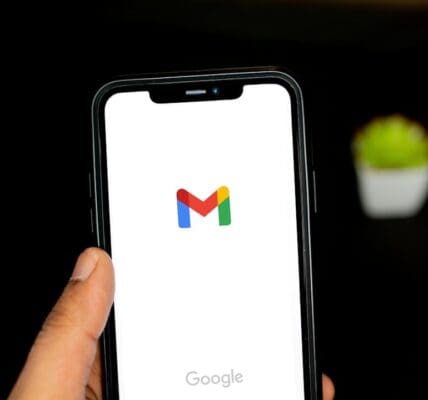In the highly competitive landscape of digital marketing, leveraging artificial intelligence (AI) is not just a choice — it’s a necessity. Nearly 90% of marketers already plan to boost their investments in AI tools this year, primarily to improve their Return on Ad Spend (ROAS). If you’re not optimizing your ad budget with AI, your competitors could outpace you, risking your market position. Fortunately, Google Ads Smart Bidding offers an advanced solution that can help you optimize campaigns effectively and drive revenue without additional ad spending.
Google Ads Smart Bidding operates with real-time adjustments based on historical data and user behavior patterns. This AI-driven tool continually evaluates performance metrics and optimizes bids to meet your specific campaign goals, allowing you to focus on higher-value projects while ensuring efficient budget allocation. Let’s explore five essential Smart Bidding strategies that can significantly enhance your revenue growth.
1. Target CPA Bidding
One of the most straightforward bidding strategies is Target Cost Per Acquisition (CPA). This approach is tailored for marketers aiming to achieve specific cost targets for conversions. By setting a target CPA, you instruct Google to optimize your bids to secure as many conversions as possible at or below that set cost. For example, if your target CPA is $30, Smart Bidding will adjust your bids in real-time across different ad auctions to ensure that your spending aligns with your goal, thereby maximizing your budget effectively.
2. Target ROAS Strategy
For those focusing on revenue generation, Target Return on Ad Spend (ROAS) is a strategic option. This bidding strategy enables you to set a desired return on your ad spend. If, for instance, your goal is a ROAS of 400%, Smart Bidding will automatically adjust bids to prioritize conversions that will maximize that return. Through consistent data analysis, Google will pinpoint trends and shifts in performance, ensuring that your advertising budget works efficiently towards your revenue goals.
3. Maximize Conversions
When the primary goal is to drive as many conversions as possible, the Maximize Conversions strategy is a go-to choice. Instead of focusing on costs, this strategy allows Google to use your daily budget to produce the highest volume of conversions. This method works particularly well for new campaigns with limited historical data, as Google will analyze various signals to identify which auctions to enter. For example, a retail brand seasonally launching a new line can benefit immensely by maximizing conversions during peak shopping periods.
4. Maximize Conversion Value
For businesses aiming to generate higher revenue from their ad spend, the Maximize Conversion Value strategy can offer substantial benefits. This approach prioritizes conversions that represent higher value, allowing businesses to focus on more profitable customer segments. If your company sells multiple products at varying price points, this strategy evaluates which products yield the most revenue per conversion, helping allocate budget towards those high-performing items more effectively.
5. Combining Broad Match and Performance Max
Integrating Broad Match keywords with the Performance Max campaign type enhances your reach and can significantly boost conversions. This strategy allows you to maximize visibility across all of Google’s properties, including Search, YouTube, and Display. By using Broad Match, you can capture a wider audience, then optimize your ad performance using Performance Max insights. Together, they create a powerful synergy that drives potential customers along their purchasing journey.
Tracking Phone Calls for Conversion Accuracy
An often-overlooked aspect of Smart Bidding is the inclusion of phone call data in conversion tracking. Research indicates that 20-50% of conversions in high-stakes industries—such as healthcare, automotive, and telecommunications—are completed over the phone. By not tracking these phone call conversions, advertisers cannot provide Smart Bidding with a complete view of performance.
Implementing a revenue execution platform like Invoca is instrumental in this regard. Invoca captures phone call conversions and feeds that data directly into Google Ads. This enhanced tracking allows Smart Bidding’s AI to optimize bids with more comprehensive insights, ensuring your budget is directed towards truly valuable conversions.
Enhancing Retargeting Through First-party Data
Retargeting is a crucial strategy for increasing conversions, especially among users who have engaged with your brand previously. First-party data, such as insights gathered from phone conversations, provides in-depth customer profiles that can be instrumental in customizing retargeting efforts. Calls contain valuable information that can highlight customer needs, pricing sensitivity, and product interest. For example, businesses can gather data about the specific products callers inquired about and subsequently retarget those individuals with tailored ads that meet their preferences.
Continuous Monitoring and Optimization
Finally, continuously monitoring performance and adjusting Smart Bidding strategies is paramount to achieving revenue targets. Utilize insights from platforms like Invoca to understand call handling efficiencies, such as call routing and agent performance. Detailed reports on these metrics aid in identifying areas needing improvement, ultimately leading to higher conversion rates.
These strategies demonstrate that leveraging Google Ads Smart Bidding, alongside a robust revenue execution platform, positions marketers to optimize their campaigns effectively and drive substantial revenue growth. By understanding customer behavior deeply, tracking all conversions, and fine-tuning their bidding strategies, businesses can harness the full power of their marketing dollars.
Adopting these practices will not only enhance your marketing strategies but can also create a lasting competitive edge.












